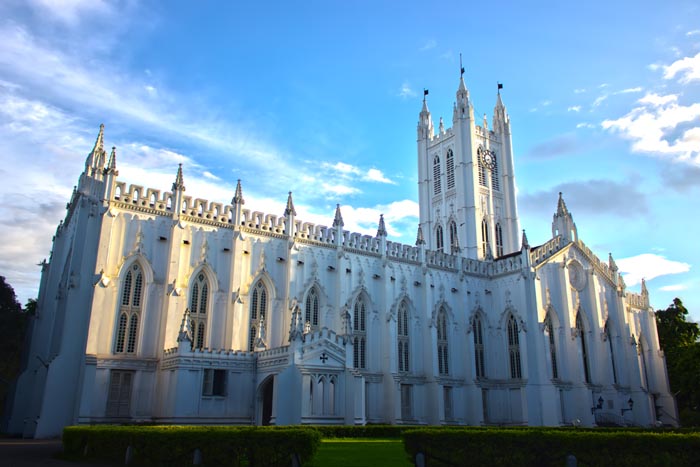St. Paul's Cathedral

Information on St. Paul's Cathedral (Kolkata, West Bengal) - History & Architecture
Kolkata is regarded to be a city with true symbolization of our secular country. The people of the city give equal respect to mosques, churches and temples. The city is known to full of several religious places and among those one such is the age old church popularly known as St. Paul's Cathedral.
St. Paul's Cathedral Religious Significance
The St. Paul's Cathedral is basically an Anglic Cathedral of the Church in the entire North India which further means that it is a combined church and is a division of the Anglican Communion in the colourful city of Kolkata in West Bengal. The mentioned church is devoted to Saint Paul who is known to be amongst the initial Christian missionaries worldwide together with James the Just and Saint Peter. He was acknowledged to be a disciple who educated the world of the initial century regarding the 'Gospel of Christ'. Saint Paul is usually regarded to be amongst the significant individuals relating to the Apostolic Age. During the period of mid 30s till mid 50s, he established numerous churches in Europe along with Asia Minor. The church or rather the Cathedral is devoid of any sort of discrimination with regard to caste or religion and welcomes people from all religions. This particular aspect makes this Cathedral a special and popular one. The Cathedral conducts services regularly and puts on a celebratory look at the time of Christmas. Numerous people from in and around the state visit the Cathedral during Christmas in order to experience the celebrations and happiness.
St. Paul's Cathedral Mythological Significance
The St. Paul's Cathedral is identified to be the initial Episcopal Church of the Eastern World. The construction work in relation to the Cathedral was started under the patronage of Bishop Daniel Wilson. The Cathedral shares an optical axis with one of the most prominent landmarks of Kolkata that is the famous monument, The Victoria Memorial. With the sanctification of St Paul's as the initial Episcopal Church of the Orient in the year 1847, it took up the responsibility of church from St John's.
St. Paul's Cathedral Architectural Significance
The establishment work in relation to the Cathedral commenced in the year 1839 and finally ended in the year 1847 and was later sanctified in the year 1874. The Cathedral was planned in an Indo-Gothic architectural pattern by an eminent military engineer in the name of William Nalm Forbes who later got promoted as Major General. The soaring centrally located square shaped tower and the spire were believed to have been a work of inspiration derived from a similar attribute found in a cathedral from the 12th century situated in Canterbury, England. The upper part of the tall tower, which formerly went up to an elevation of about 200 feet was damaged twice in major earthquakes that took place in the year 1897 and was followed by another one of great intensity in the year 1934 which was again reconstructed. The central part of the church is known to be quite huge in terms of area and includes magnificently engraved wooden chairs as well as pews, exquisitely coloured artwork which envelops the eastern side of the walls, a tainted window in the east made of glass along with two awe-inspiring Florentine frescoes. The basilica is about 274 feet in length and about 8 feet in width. The cathedral is positioned amidst huge grounds which includes numerous old trees and this feature further adds to the beauty of the cathedral thus, making it a visual treat.